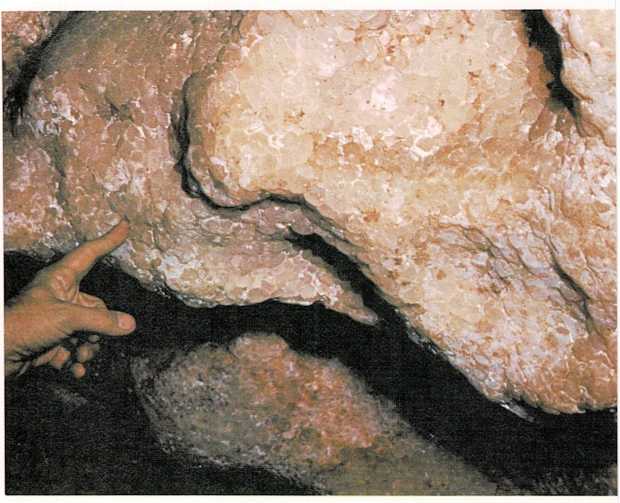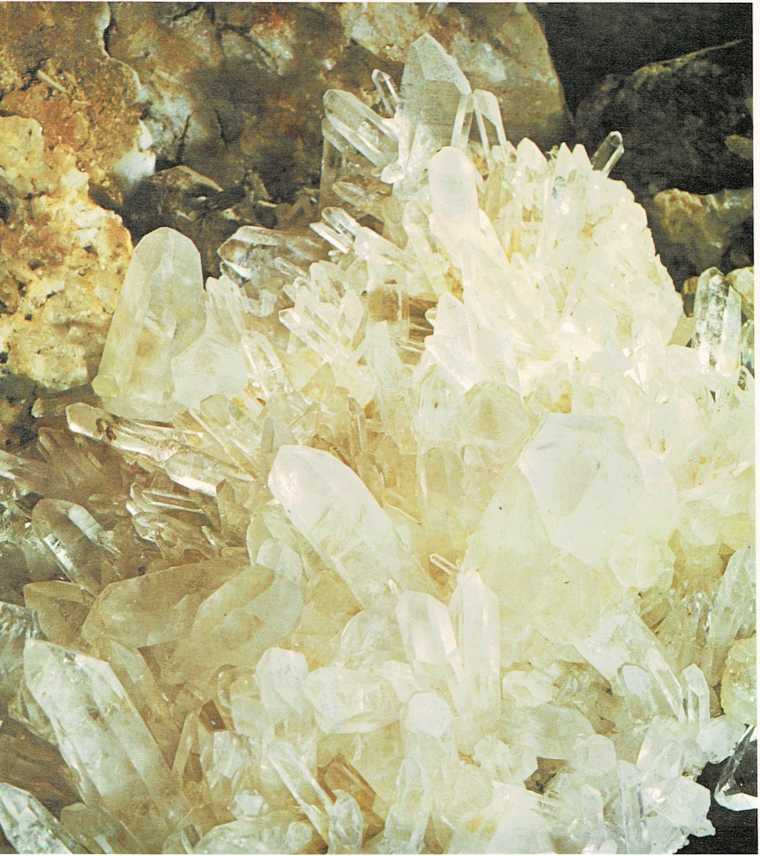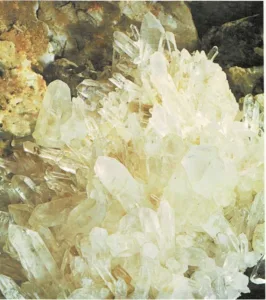Flat sides and sharp corners
A chunk of mineral may seem to be just a jagged, lumpy, or twisty piece
of hard stuff with no special shape. But each kind of mineral is
actually made up of tiny shapes called crystals—shapes that have flat
sides and sharp corners, such as cubes, squares, and pyramids.
Each kind of mineral is made up of crystals that have the same shape.
The mineral halite, which is the salt we put on food, is made up of
crystals shaped like cubes. Diamonds are made up of crystals shaped like
pyramids. Graphite, which is the “lead” in pencils, is made up of square
crystals.
It seems strange to think of hard, lifeless things growing. But crystals
actually do grow. They don’t grow from the inside, as living things do,
however. They grow by joining together. For example, the walls of a cave
may be covered with a particular mineral. Water trickling down the walls
washes crystals of this mineral onto the cave floor. The water, filled
with many tiny crystals, forms a puddle on the floor. As the puddle
slowly dries up, the crystals stick together. They form larger crystals.
That’s how crystals grow— when more and more of them join together.
Some minerals have the same shape as the crystals they are made of.
Diamonds usually look like two pyramids with their bottoms stuck
together. Graphite comes in flat sheets. Pyrite comes in clusters of
shiny, golden cubes. Quartz is often found in clusters of six-sided,
pointed shapes.
calcite crystals on a cave wall, South Dakota

quartz crystals in a cave, Arkansas


